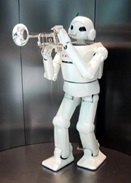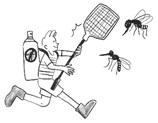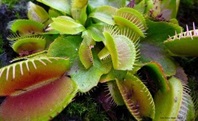Living Things and Non-living Things
1. Robots Can Walk, Dance, Sing, Speak, and Even Think, So Are They Living or Non-living Things?

- Robots can do many human activities nowadays. But they are made using non-living things such as plastic, metals, glass, etc.
- Robots can think and perform different activities based on their programming, using a set of instructions.
- They do not require food, water, and air to survive; they cannot reproduce; hence they are non-living things.
2. Why Do Chalks Break Into Pieces, but the Metal Wires Get Bent When We Try to Bend Them?

- Specific properties of non-living things make them unique.
- The material with which chalk is made, i.e., limestone, is fragile and soft and can be converted into powder if scratched.
- On the other hand, the material of wires (copper, aluminum, etc.) is flexible.
- Such materials cannot break even if hammered but change their shape to form a wire or sheet.
3. Wouldn't It Be Great to Have No Insects Like Mosquitoes or Cockroaches Anywhere?
Do You Agree or Disagree With This Fact?

- Many insects are harmful to us as they destroy food, clothes, etc.
- However, they are part of food chains that prevail in the ecosystem. Some other animal species in our ecosystem will be affected if they do not exist.
- Moreover, silkworms, honeybees, and lac insects are beneficial for humans as they secrete essential substances.
4. Do All Plants Make Their Food?

- Most plants appear green because chlorophyll gives them their characteristic color. They make their food using a green pigment called chlorophyll, water, minerals, and sunlight.
- Some non-green plants, like mushrooms, do not perform photosynthesis due to the lack of chlorophyll.
- Some plants like pitcher plants and Venus flytrap partially fulfill their nutritional demands by ingesting insects.
5. Birds Lay Eggs to Reproduce While Few Animals Give Birth to Young Ones. How Does Reproduction Take Place in Plants?
- Plants reproduce by forming seeds inside the fruits.
- Fruits are matured flowers.
- These seeds germinate to grow into a new plant.
Share

